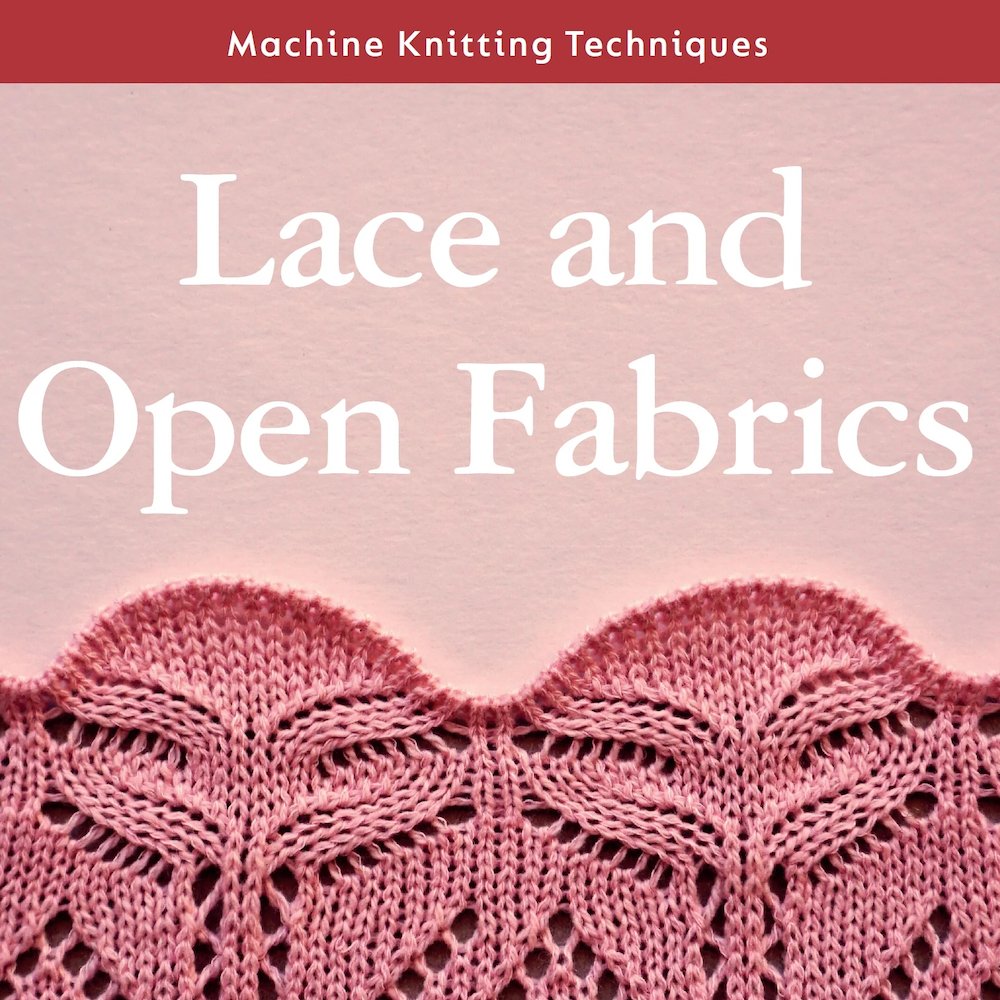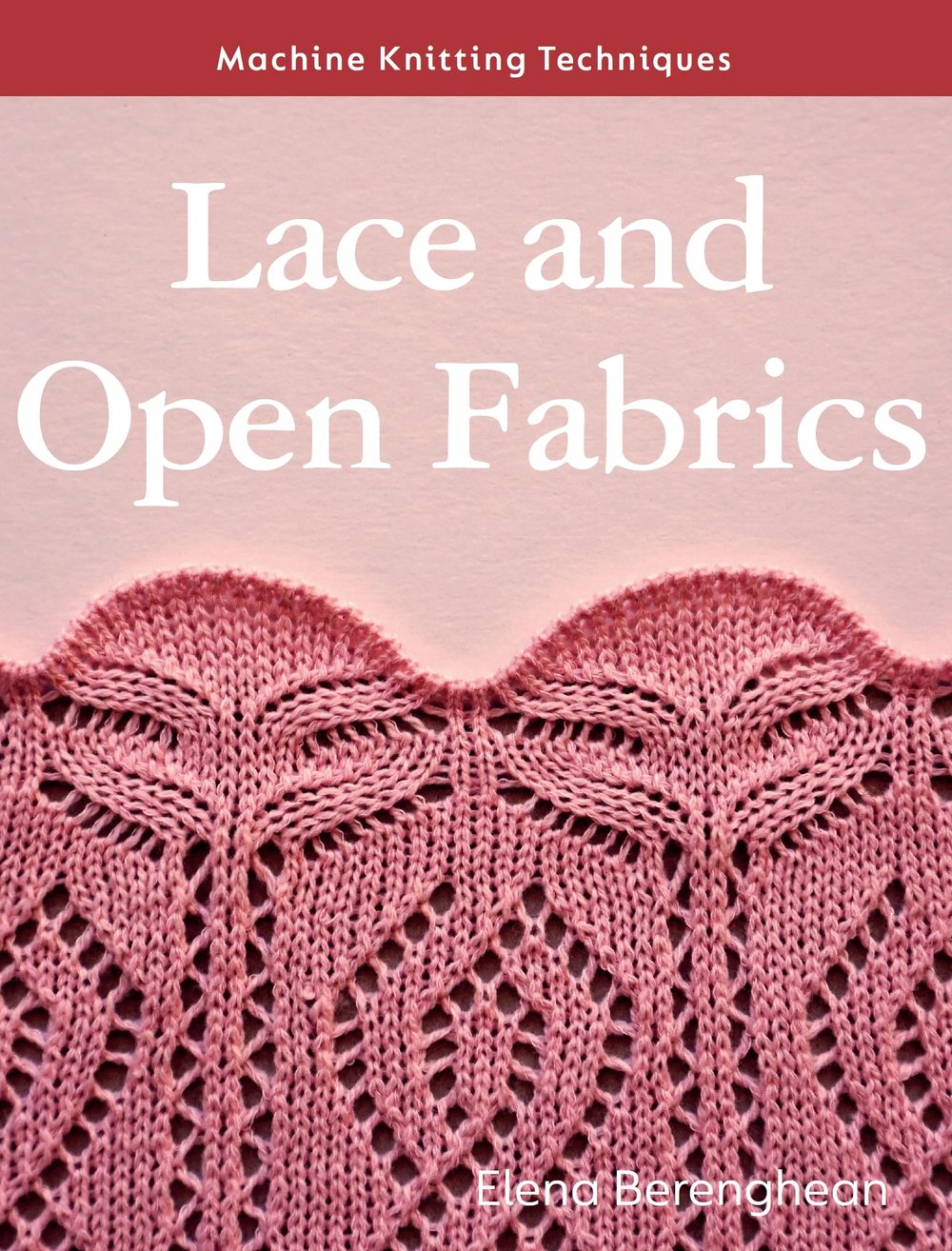Unveiling the magic of Lace and Open Fabrics: A book review
It's very satisfying to be bringing the year to a close with a final book review for another new machine knitting book! This time it's a new book on Lace and Open Fabrics from Elena Berenghean which is now the fourth book in the new series on Machine Knitting Techniques from Crowood Press.


It's very satisfying to be bringing the year to a close with a final book review for another brand new machine knitting book that has been published this month! This time it's a new book on Lace and Open Fabrics from Elena Berenghean which is now the fourth book in the new series on Machine Knitting Techniques from Crowood Press.
My review copy arrived in the post last week and I have been eagerly waiting for a spare hour or so to be able to sit down with a brew and take a look between the covers. Having published my own book at the beginning of the year (and through working with Elena whilst she was working on the book), I feel like I have bit of insider knowledge. But this was the first time I would be able to deep dive into the contents.
The book is a similar size to the others in the series covering 6 chapters over 128 pages and is a perfect length to give detailed and focussed information on lace knitting in a structured way. For somebody who has never attempted lace on the knitting machine before, the book is an excellent walk through of all the aspects.

Each chapter covers a different area in detail starting with a solid grounding in the basics in Chapter One. Here, the transfer tool is the hero with clear explanations on using it to create eyelets, fully fashioned transfers and shaping. What I loved here was Elena's clear and detailed instructions on reading, understanding and writing your own lace charts. This is a really valuable skill that is often overlooked in favour of the more technical aspects. She also includes several pages of charts for you to sample, build your skills and increase confidence.
Chapter Two moves onto the lace carriage and this is written from the perspective of a Brother knitting machine user. If you have a Brother knitting machine this is a fantastic introduction to give you enough confidence to use the carriage and punchcards. It is still of interest to Silver Reed users as well but not all information will apply. Elena has included a section at the end of the chapter explaining the main differences between the two that should give users enough information to be able to refer to their own instruction manual for translation between the two although a bit more work will be required.
Thankfully, this is the only section of the book that isn't relevant to all makes of machine as Chapter Three moves onto Long Stitch and Open Fabrics which again involves hand manipulation that can be worked on all machines. And here Elena creates and shares charts for some truly gorgeous lace patterns that I was itching to try straight away. The chapter also encompasses tuck stitch and adding beads to give an exciting window into the possibilities of what you can create with just your hands and your transfer tools.
Chapter Four is aimed at knitters who have a ribber attachment with their machine and want to use it to create open knit fabrics on a double bed. Here there are useful tips on casting on and creating lovely edges to your fabric as well as ways of incorporating lace into your hems and trims which can be a nice alternative to allover lace patterns and fabric.
This is followed by an entire chapter dedicated to yarn and the difference it can make to open work knitting. There are some lovely examples and suggestions for ways to combine different types of yarn to really elevate your lace knitting to the next level. There are more charts and suggestions that you can sample - along with enough detail to inspire you to start playing around and experimenting with all the yarns in your stash.
Finally Chapter Six is where all the information is pulled together with four fantastic knitting projects putting everything you have learnt into work. For those who are newer to machine knitting there are patterns for a scarf and hair scrunchie that would also both make excellent gifts for others. The third project for mittens is a step up with the option of adding ribbing, shaping and a thumb. And then the final project is a dropped shoulder jumper that all knitters should by now have the confidence to attempt. All four projects are simple, stylish and very practical and I am sure they are patterns you could come back to and adapt and personalise as your skills and confidence grow.

Overall this is another fantastic book which really expands the series. Elena has managed to create a book that is both easy to follow and understand whilst also being extremely inspiring. As I would expect from Elena, the level of detail is high and there are over 300 detailed technique photos and charts to follow. But this does not make it dry and boring. Far from it, I ended the book with my head buzzing with ideas and just wanting to jump on my machine to try a few things out. I don't think you can ask much more than that. If you are looking for the confidence to try your lace carriage for the first time, or to move on from basic eyelets then this is definitely the book for you. But even if you consider yourself a confident lace knitter, there will still be techniques and ideas in the book that open up even more possibilities for you. Now where did I put that transfer tool ...
I would love to know what anybody else thinks if you have received your copies as well! Please add your comments below.

 nikhil
nikhil 





